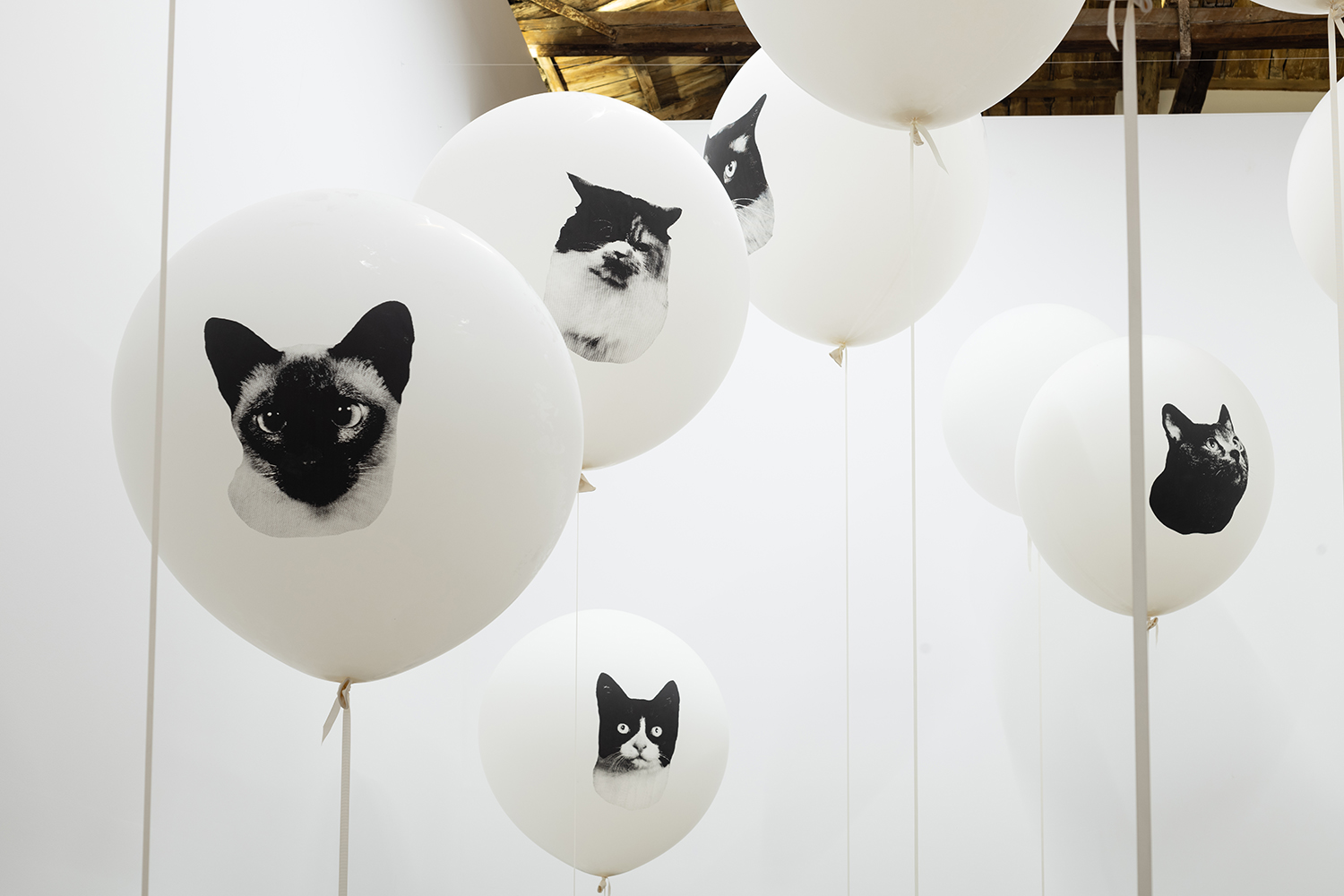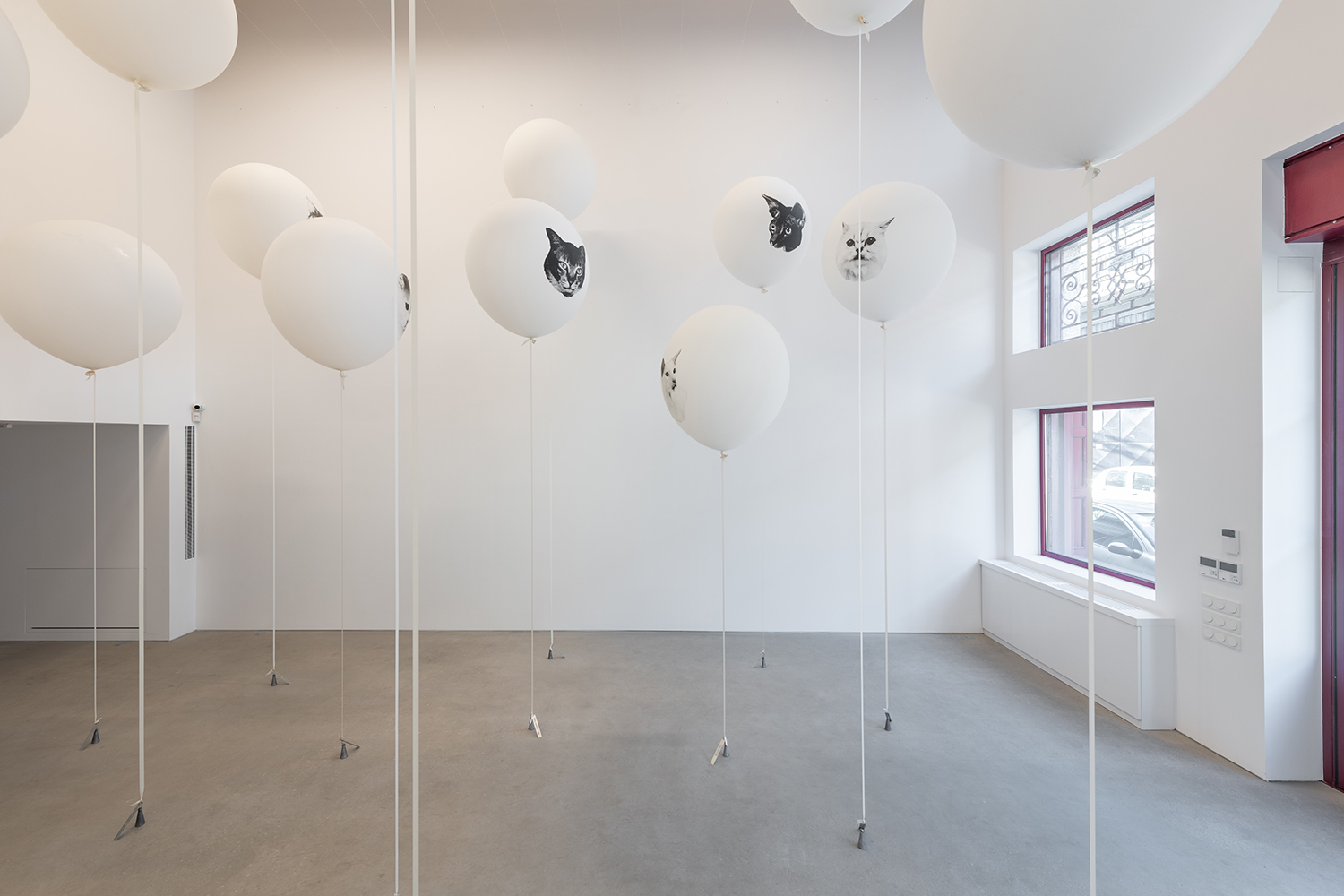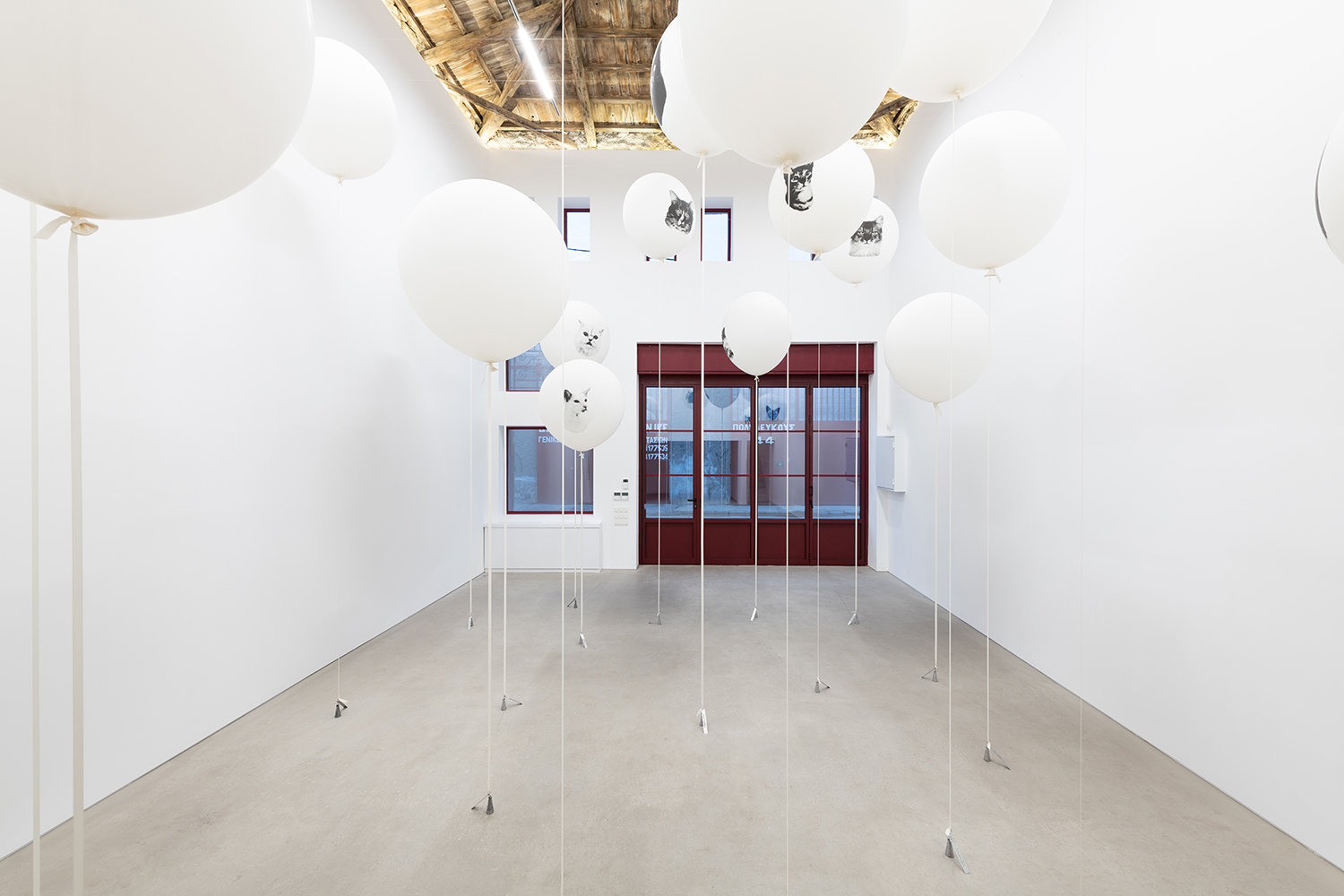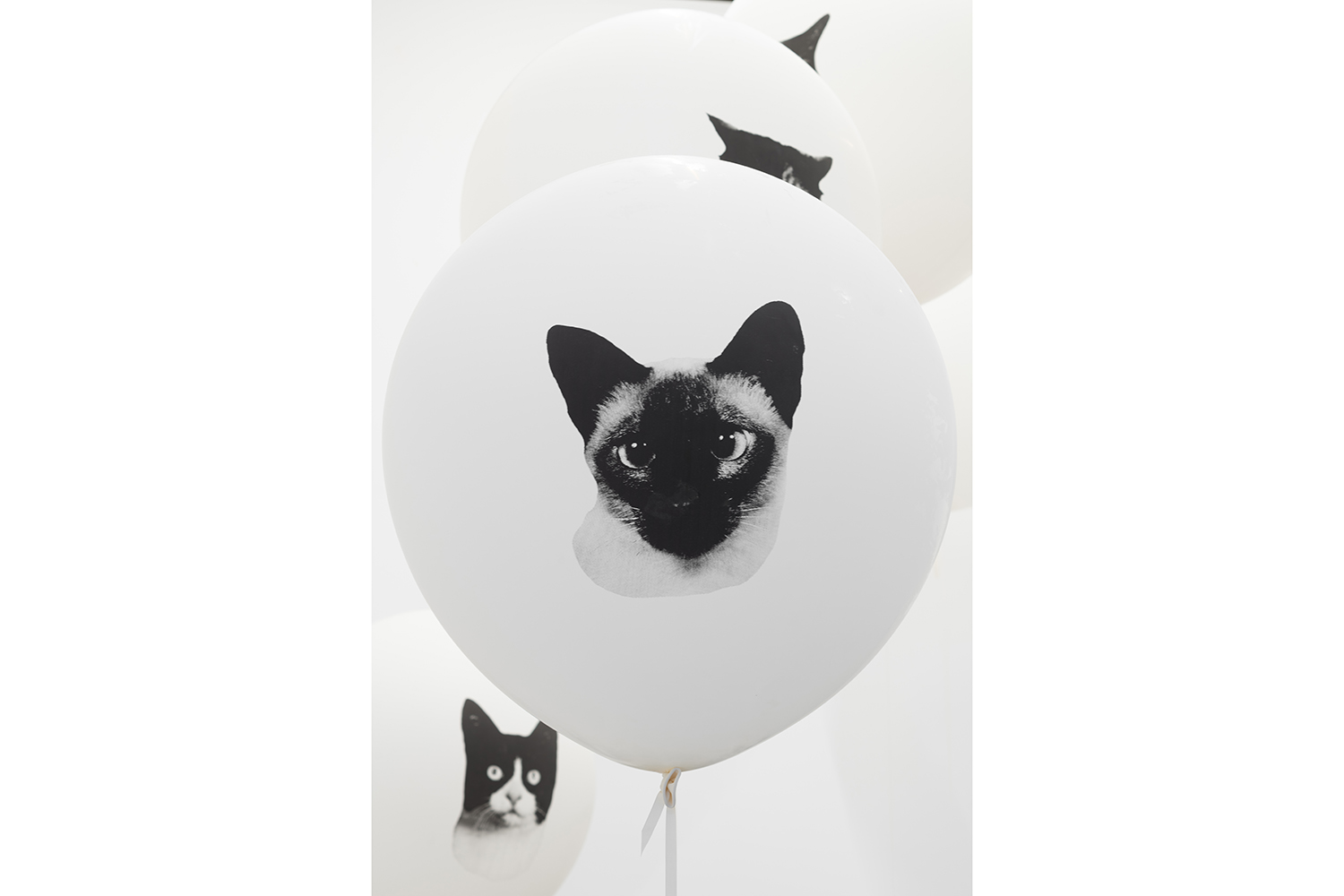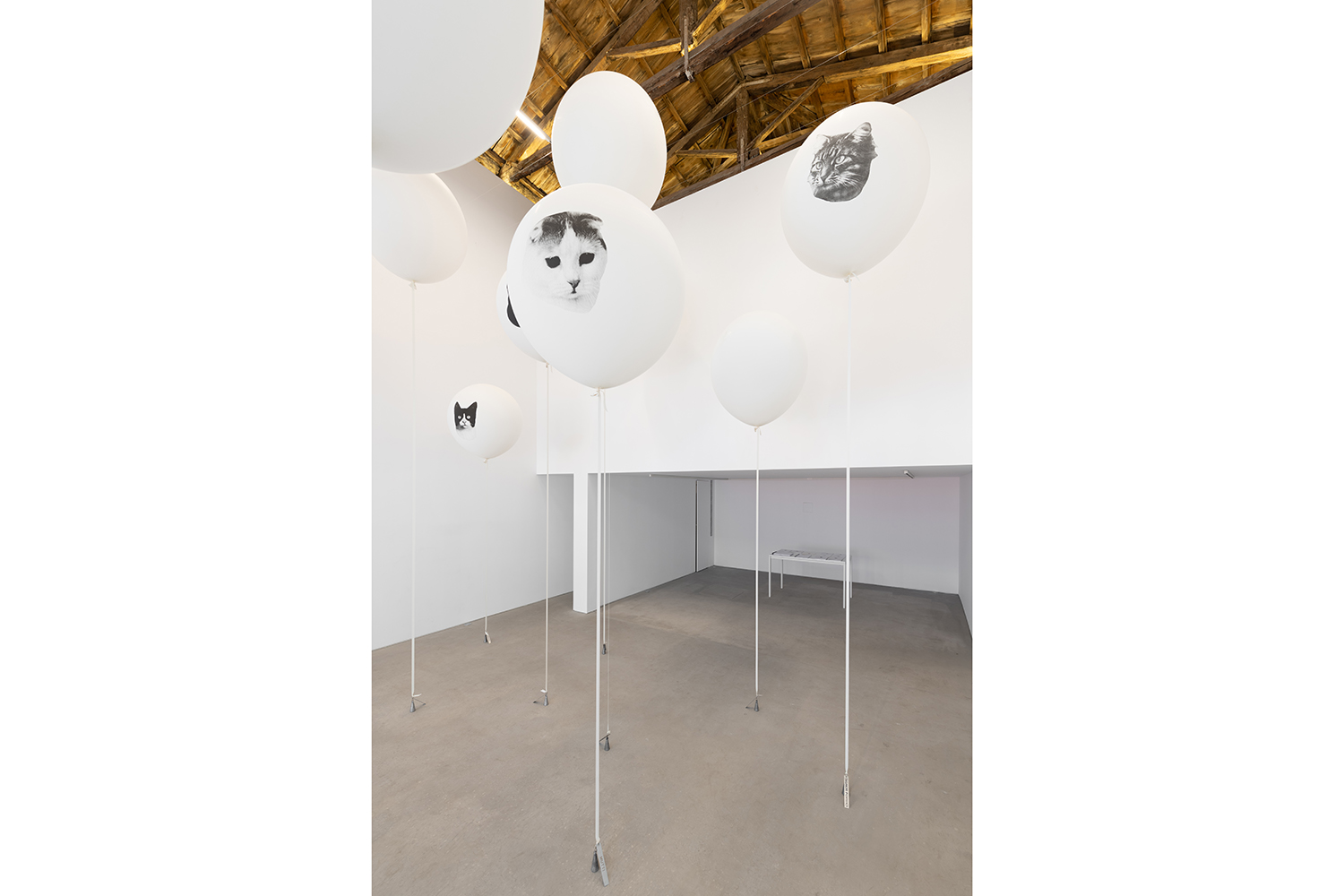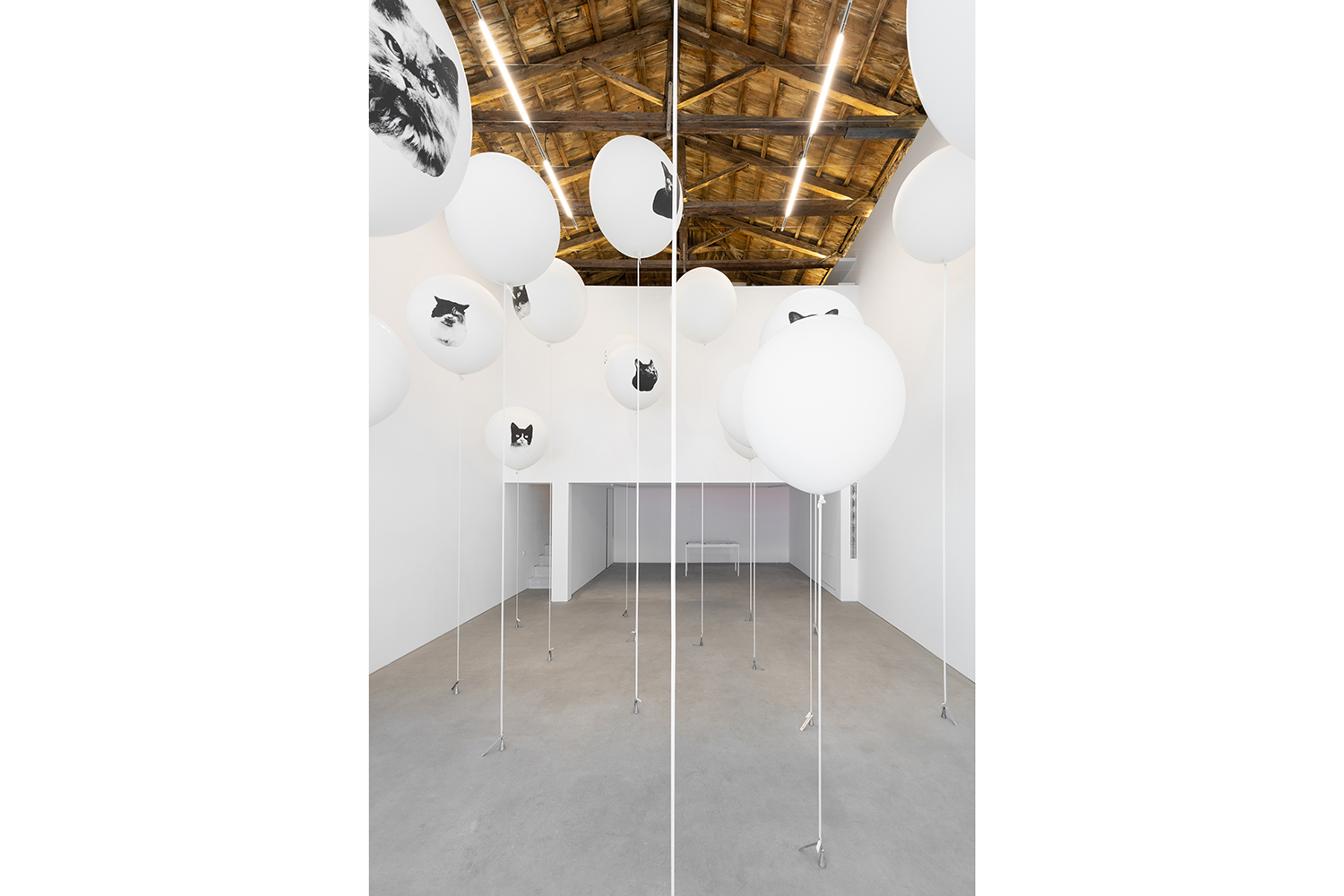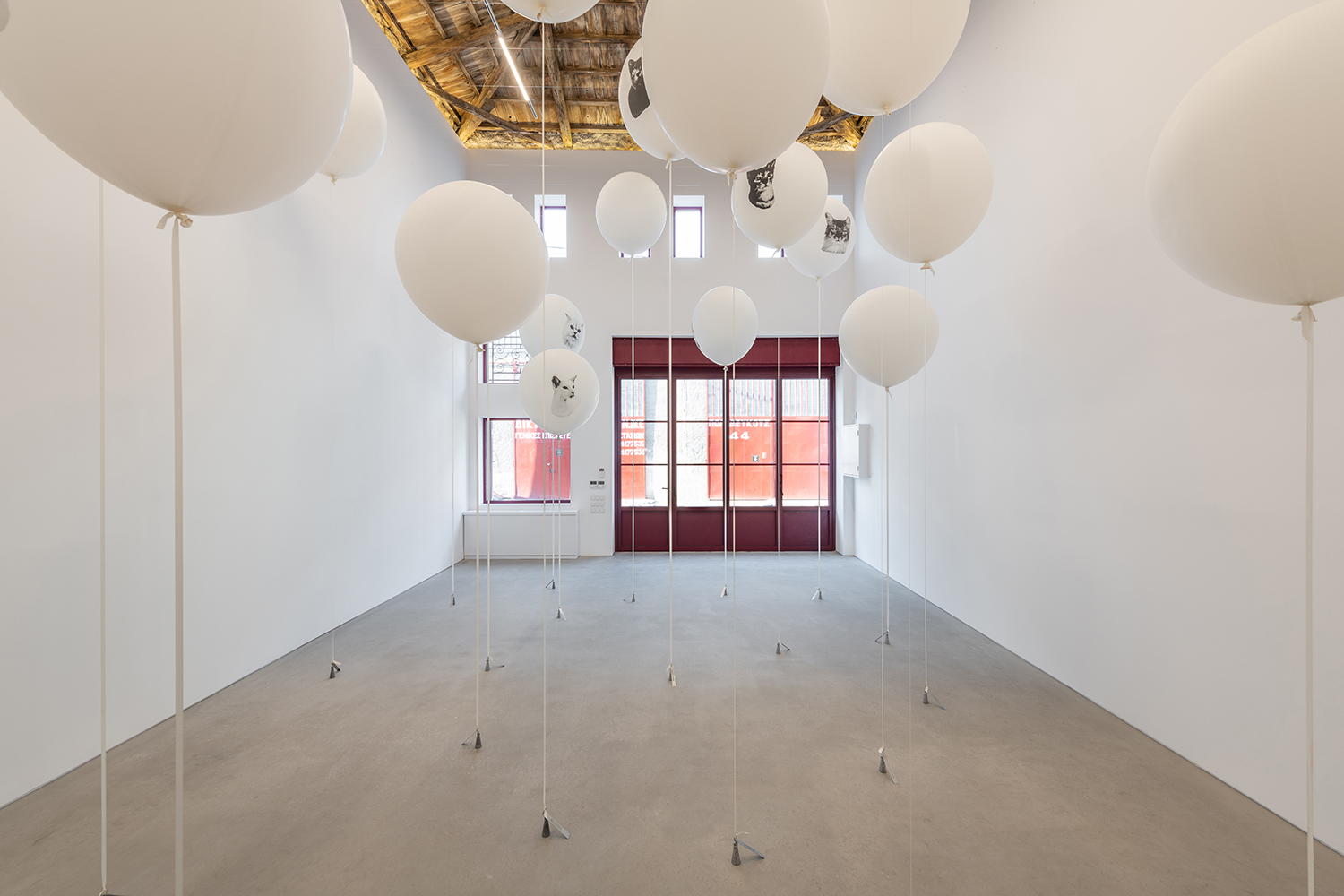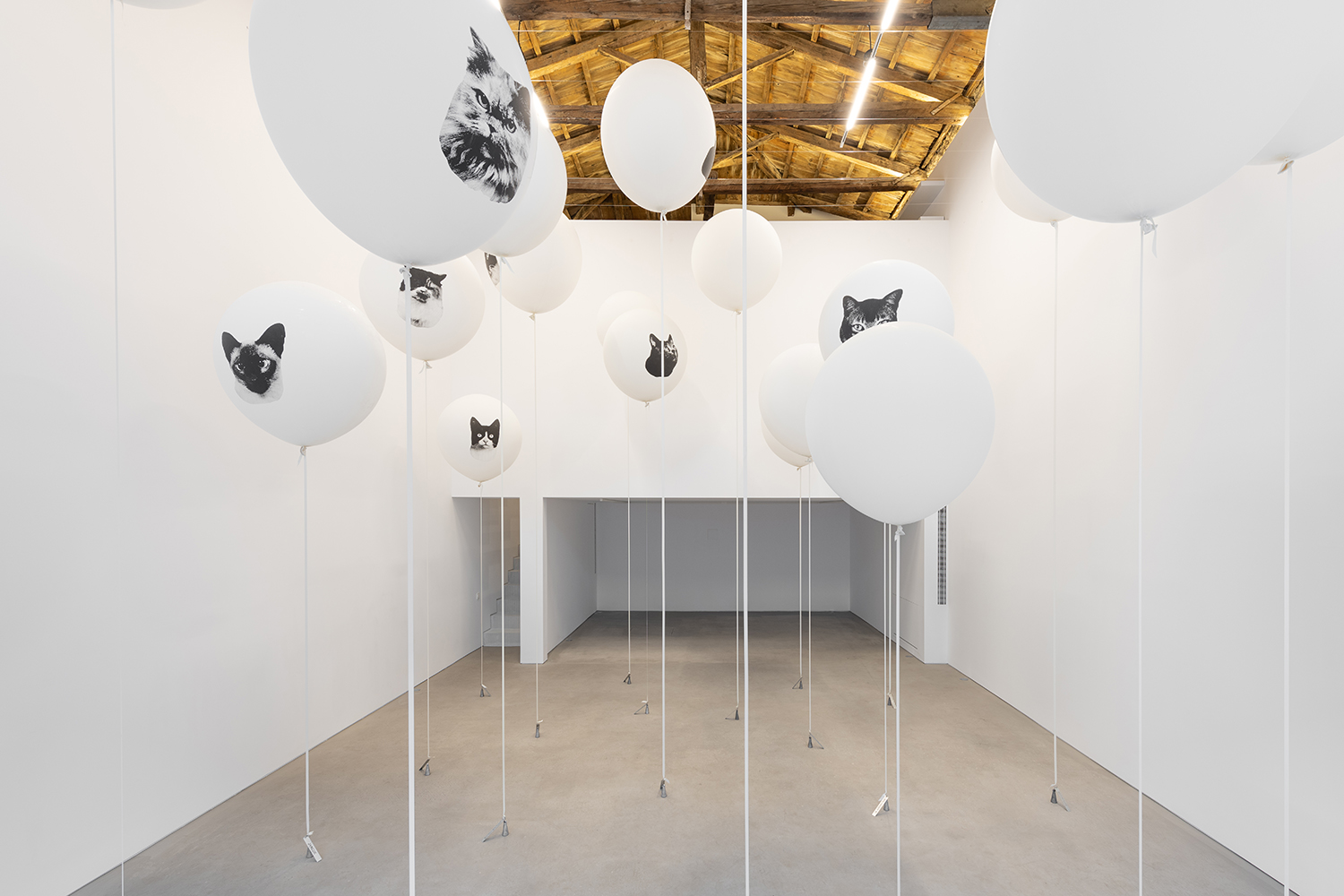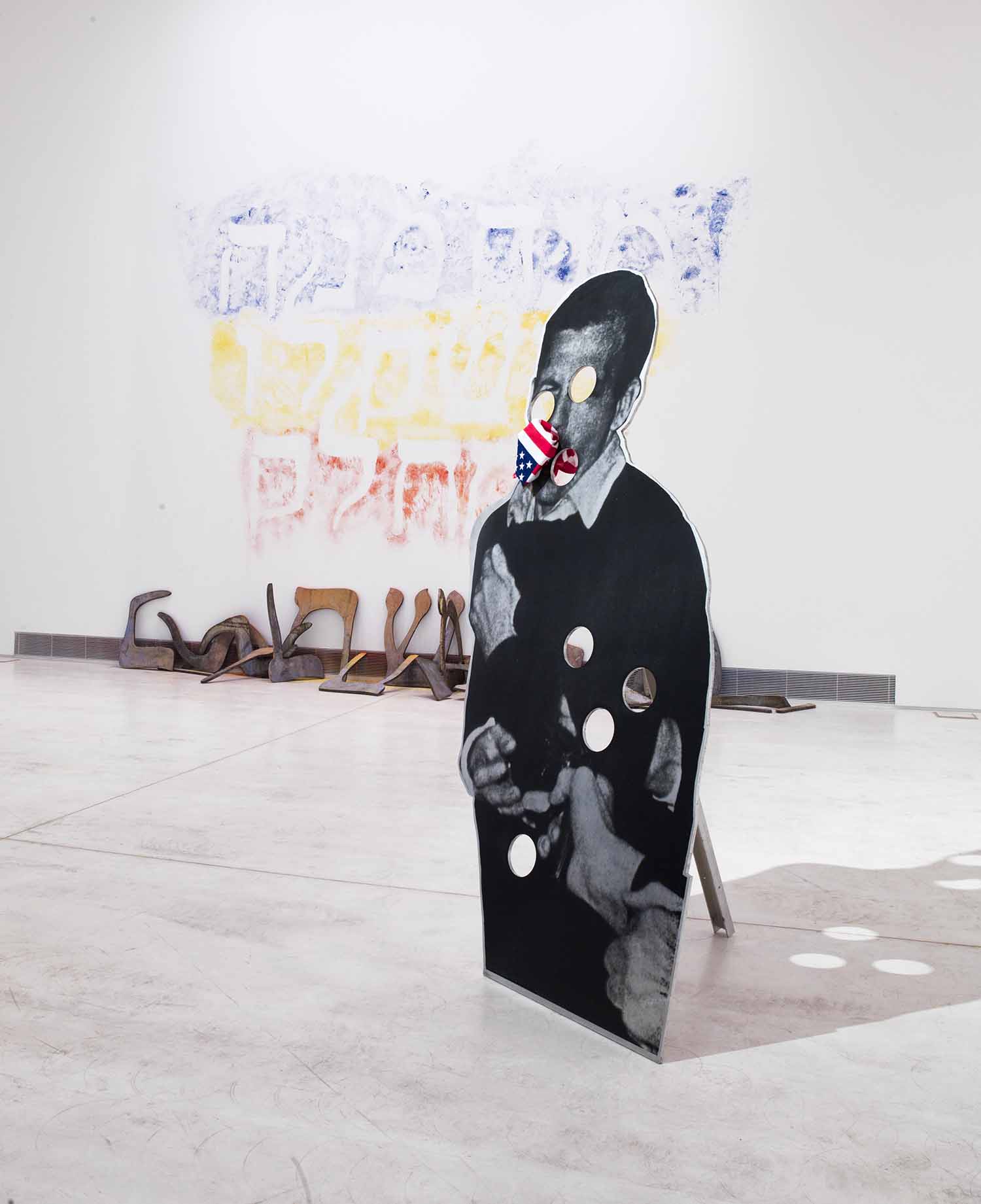After the global financial crisis in 2008, the G20 Summit — the annual meeting of leaders from countries with the largest and fastest-growing economies, previously attended mainly by ministers of finance — turned into an emergency council for presidents and prime ministers, who now always attend. Nevertheless, as The Guardian wrote on the occasion of the most recent G20 summit in Japan last August, “Ever since the G20 of leading global economies was founded, its summits have mostly been convergent occasions, marked by attempts to find common ground and remembered for nothing more unseemly than a bit of jostling among the heads of government to be on the front row of the group photograph.” In the freshly white-washed gallery of The Intermission’s inaugural show, twenty cat faces printed on white balloons jostle each other as if competing for the attention of the viewers that walk among them. To parallel the leaders of the richest countries with cats, the unchallenged rulers of the internet and social media in terms of shares and views, seems a funny yet schematic comment on the banality of the announcements exchanged at such summits. It is the visual equivalent of a truism.
Metal name tags, which act as weights to keep the balloons tethered to the floor, are the only clues given for decoding John Knight’s cryptic installation “Headshots” (2019), organized in collaboration with Galerie Neu, Berlin. The LA-based conceptual artist is known for his site-specific works that challenge global power systems, and for his “residual objects” — objects left behind to interact with the viewer. For this new work, Knight researched the nicknames of each politician of the G20 and engraved steel tags with the ones he found most subtle, humorous, and precise. “Cheeto” is Trump, due to his skin color and reputation for cheating; “Mutti” is Germany’s “mother,” Angela Merkel; “Big Daddy Xi” is Xi Jinping, a once-official nickname for the president of the People’s Republic of China, which Chinese propaganda chiefs ordered the state-controlled media to stop using because of its allusion to Mao’s autocracy; “Lil Potato” is Canada’s prime minister Justin Trudeau, a name he earned when, on a trip to China, it became known that his name sounds similar to the Mandarin word for potato. The last balloon features John Knight’s signature JK logo in the color scheme of the Greek flag. It is named after Greece’s former prime minister, Alexis Tsipras, who was nicknamed “Somersault” after his post-election change of policy regarding austerity measures. Having won the election with the slogan “Hope is coming,” many accused Tsipras of populism.
A Google search of each nickname reveals various sentimental anecdotes, each typically connected to some aspect of local politics. Opinions differ on whether emotion should be kept out of politics to improve democracy; today’s choice between technocrats and populists, both of whom tend to talk ethically, shrinking the political arena, seems like a balloon-puncturing problem. Vladimir Putin (“Pootie,” as George W. Bush used to call him) argued that liberalism, the ideology that has underpinned Western democracies for decades, is obsolete, thus trumpeting the rise of populism (aka nationalism).
Greek political theorist Yannis Stavrakakis highlights not populism but anti-populism as a major symptom of the modern crisis of democracy. Populism and anti-populism are part of an age-old struggle between the power of the many and the power of the few, and anti-populism has emerged as a form of deprecation of the many in political discourse. Living in a country like Greece, where the new anti-populist right-wing government is seen as the angel of normality, justifying often-violent police repression, the call to reclaim the positive aspects of populism — as an expression of the spirit of conflict necessary in all political opposition — seems more urgent than ever.

